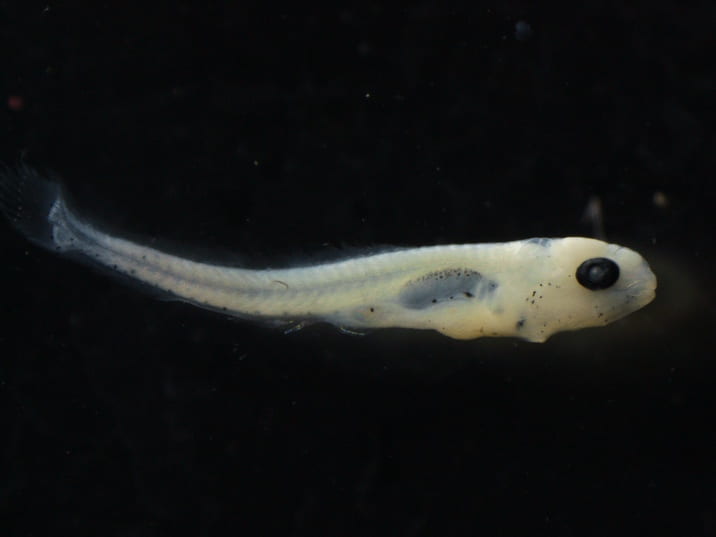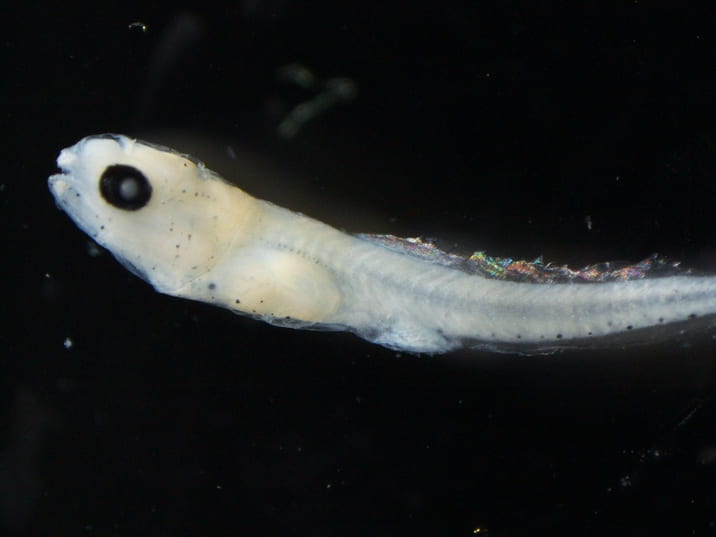Key Characteristics:
- Light chromatophores (spots) on the dorsum of the head
- No barbels
- Adipose fin present
- 14-16 preanal myomeres
- 18-20 post anal myomeres

Larval Trout Perch. United States Fish Wildlife Service. Marian Shaffer. 2017.

Larval Trout Perch. United States Fish Wildlife Service. Marian Shaffer. 2017.

Larval Trout Perch. United States Fish Wildlife Service. Marian Shaffer. 2017.

Larval Trout Perch. United States Fish Wildlife Service. Marian Shaffer. 2017.
- Body not elongated, eel-shaped, round in transverse section, uniformly pigmented (1B)
- Chin barbels absent (3B)
- Snout short, its length usually less than 10% TL; median fins otherwise (5B)
- Median fins or finfolds showing distinct separation (7B)
- Adipose fin, or its position, evident (10A)
- Total myomeres 32-34 (11A)
- Percopsidae – Trout Perch
Adult History
- Physical Description
- Adipose fin present, silvery appearance, 7-12 black spots on back, subterminal mouth, single dorsal fin with 10-11 rays and two spines, small teeth on the upper and lower jaws, and unique position of the pelvic fin (underneath the pectoral fin)
- Spawning Habitat
- Over sandbars and rocks in lakes
- Lower portion of tributary streams
- Along beaches and in streams less than 2 meters deep
- Spawning Substrate
- Deposits eggs on sandy bottoms
- Spawning Behavior
- Do not build nests or defend their territory
- Multiple males for one female
- Time of Year
- June – September in Lake Michigan
- Spawning typically takes place at water temperatures of 40-70°F
- Diet
- Small fish, aquatic and terrestrial insects, crustaceans, copepods

